#lettheriverflow
Explore tagged Tumblr posts
Text
An Interview with Sebastian Beierle
Jaime Molina: Please introduce yourself.
Sebastian Beierle: I was born and raised in a rural area in southern Germany, currently I live in Dortmund and work on my graduation project for my bachelor. When I was a teenager my friends and I were shooting skate movies with an 8mm camera, I think that led to my interest in photography. I then photographed for many years, but never with the intention of doing it professionally. When I quit my engineering studies in 2016, it was clear to me that I wanted to spend my time with photography and wanted to learn more about it.Currently i'm working on a photographic essay about the absence of tourists on the Spanish coast during the winter. It was not very easy towards the end because the pandemic turned everything upside down.

JM: could you tell me more about the project ?
SB: At the beginning of my photography studies, I drove with two friends in a campervan through southern France to Spain. One day we were driving until late at night, when we arrived at a parking lot somewhere at the Spanish Mediterranean Sea, it was far dark. The next morning we woke up between huge hotels and palm trees. It reminded me of the perfect summer vacation, however, it was winter and we were far the only people. In this region of Spain, almost everyone works in the tourism industry during the summer. People have to earn money for the whole year in a few months. In the winter, unemployment rises sharply and the city falls into a deep sleep.
The idea of living in this place year-round left me with a stale feeling of loneliness. All these ambivalent impressions led me back to this place for several months a few years later. My idea was to create a photographic investigation of this strange atmosphere, a kind of "calm before the storm". I began to question the sense of infrastructure as well as the enormous impact of tourism on the everyday life of the locals.
I show landscapes and architecture as purposeless backdrops. In contrast to the vast, empty spaces, I create close-up portraits of the few inhabitants, who seem almost like lost extras in their own city. The resulting photographic series, the photographic play between proximity and distance, describe different questions in an essayistic character without pursuing the goal of a definitive answer or even a clear solution.
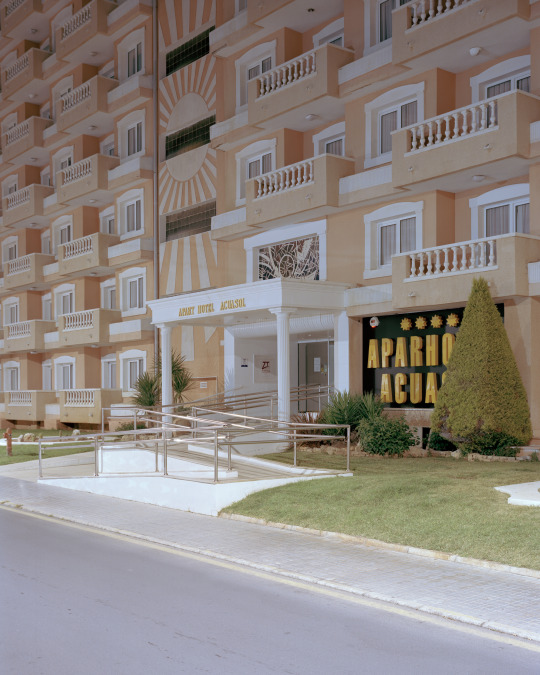
JM: Why is it important for you to incorporate the inhabitants from the town? Why not just landscapes?
SB: A city without inhabitants only looks like a scenery to me. Only the people give the architecture a soul and fill the whole thing with life.
Especially in Peniscola there is not much life over the winter, the more important it was to me to show some of the people who hold out in this quiet situation. Portraits often create a connection for me, I find they are able to transport completely different emotions than, for example, an architecture or landscape shot.
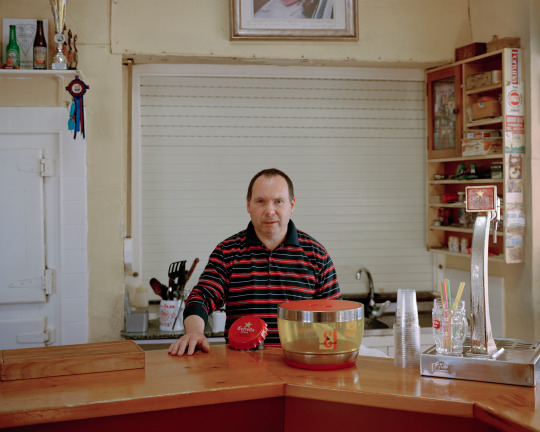
JM: Where do you normally gather inspiration from? What portrait photographers do you look up too?
SB: Inspiration is a complicated thing. Sometimes I have a thousand ideas and other days I'm totally at a loss. But poems often offer me a good source of inspiration, for me they work similar to photographs. They describe something, a place or a feeling in different ways. What you end up taking away from it is entirely up to the viewer or reader.
There are so many brilliant portrait photographers I look up to. August Sander, for example, is for me the godfather of German portrait photography. And in contrast to the individual portraits of Sander I celebrate what for example Mathew Genitempo, Bryan shutmaat, Alec Soth or Raymond Meeks do. The mixture of portraits, landscapes and architecture create such powerful essays that are very calm but at the same time totally intense.

JM: Would you say that most of your work follows a linear narrative influence by the places you photograph?
SB: I guess it depends on the project, which narrative is more suitable. When I photograph a reportage, I stick more strictly to the temporal plane. In the more free works, it is often rather linear at the beginning of editing, but the longer I deal with the images and the story, the more the linear blurs into a nonlinear narrative. From this point it is always very exciting because you start to tell a story yourself and process your own impressions.
JM: Why did you decide to submit that portrait onto LTRF?
SB: When it was my turn to submit my image to LTRF I went out a lot to photograph. For some reason I didn't find the right subject to respond to the previous image, so I searched my archives. It was important to me that the picture was taken during the time of COVID 19. When I found the image of Simon I thought it would work well as a response. Fortunately, the picture fit into the whole project very well. It was really a pleasure to participate in such a great project with so many good photographers.
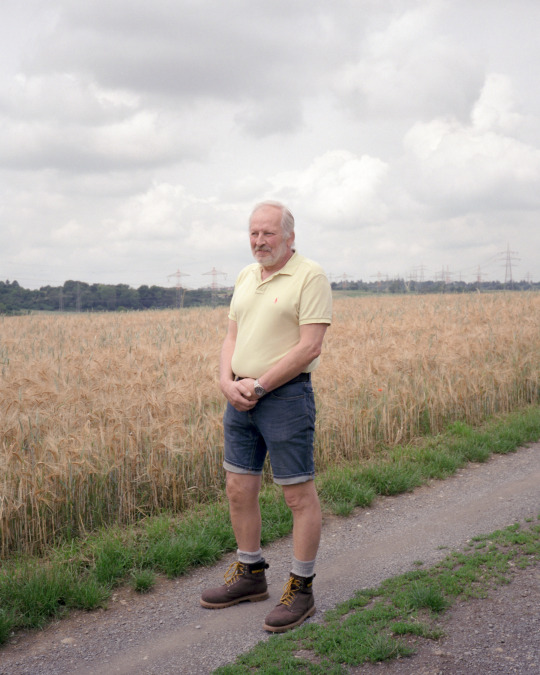
JM: How has COVID Influenced your practice?
SB: Everything is going much slower than usual, people are not as open as they were before the pandemic. But I think we're all going through a hard time right now and I hope it gets back to normal soon. In the meantime we just have to photograph more landscapes I guess.
JM: Who has been the favourite person you’ve taken a portrait of? And if you could give yourself any piece of advice right now what would it be ?
SB: I would say my father. We've had a very strained relationship for many years. For some time now we've been getting closer to each other. This summer I went for a walk with him and I took some portraits of him. They are not the best pictures I have ever taken, but they mean a lot to me because we have opened up to each other.
I would say to myself, "Sebastian, you are not just your photographic work. If you haven't taken exceptional photos for a while, it doesn't mean you haven't done anything."
Thank you Sebastian!
___________
Sebastian Beierle
Let The River Flow on Instagram
Issue 1. Available now.
1 note
·
View note
Text
Deixe o rio fluir
Deixe o rio fluir
Foto por Leah Kelley em Pexels.com “Você não pode pisar duas vezes no mesmo rio, pois outras águas estão continuamente fluindo.”Heráclito, 500 A.C Essa citação é a mais pura verdade. Você deixa o rio fluir ou seu rio está parado? Quando o rio está parado é porque, não tem mais vida. Não seja assim! Pegue o exemplo do rio ele sempre flui, e ele não nasceu para ficar parado, assim é…

View On WordPress
0 notes
Photo

#lettheriverflow (at Washington Square West) https://www.instagram.com/p/CTBR71tDom56BDk_A8x3DoH_fzf7zslmO89fwg0/?utm_medium=tumblr
0 notes
Photo

Humans are addicted to want, pleasure and self. When they get it, it’s never enough. It will never be enough, this is the mindset Modern people live out of. Fear of loss, so we go through life wanting and receiving Only to move onto the next item or situation because the only thing we really want is to keep gaining . this To our minds is life. People walk around living scared lives of indifference to everything, leaving no room for real communication. People look at loss as defeat or vulnerability. People use words as hollow as an empty vessel yet they’re hollowness is not useful, it’s damaging. If one is not careful or present one risks that hollowness internally. Hollowness and emptiness are not the same thing. To be empty is to be content to be hollow is to be stubborn selfish self deprecating. To be hollow is to be cold embodying an unnatural mannerism. Hollowness is Barron. Hollowness is the destruction of fullness, it is the enemy of an empty existence. Hollowness this is the soul being suppressed, The soul its very nature is light as air , free as the sky above. Hollowness is the after life creeping in on a wary soul, if one is not careful hollowness will manifest itself inwardly. Pitying the soul inwardly. Every day we lose a small piece of ourselves. We are not forever ,we are already dead we are already ghosts walking the earth for insane ends and means. Disregarding all that’s around us in selfish attempts to define something that never really came to be in the first place. Be empty , so that you may be filled again. Be hollow and embody the void. 🐲🐉⛩🎋 #emptyvessel #hollowexsistence #freethesoul #materialexsistence #thingsoverpeople #scaredworld #internal>external #speakyourmind #letgo #lettheriverflow #therealmastryota #therealwanderingdragon #lifeismyanime #monk #martialmonk #Taoism #heretodaygonetoday #wushu #mtwudang #shaolinkungfu #martialartsphilosophy #materialworld #maybuddahbewithyou #youarethebuddha #eyesightisnotmindsight #laotzuwisdom #madworld (at Landers, California) https://www.instagram.com/p/B2E5EwSFdNn/?igshid=qicus0817l9w
#emptyvessel#hollowexsistence#freethesoul#materialexsistence#thingsoverpeople#scaredworld#internal#speakyourmind#letgo#lettheriverflow#therealmastryota#therealwanderingdragon#lifeismyanime#monk#martialmonk#taoism#heretodaygonetoday#wushu#mtwudang#shaolinkungfu#martialartsphilosophy#materialworld#maybuddahbewithyou#youarethebuddha#eyesightisnotmindsight#laotzuwisdom#madworld
0 notes
Photo

I see what you're saying... #totem #popsurrealism #eyeballs #apictureisworth1000words #art #outsiderart #gellyroll #micron #surrealism #lowbrowart #46and2 #visionquest #lettheriverflow #visionaryart (at DREGstudios! Art & Design)
#gellyroll#outsiderart#popsurrealism#art#surrealism#totem#lowbrowart#46and2#lettheriverflow#visionaryart#visionquest#apictureisworth1000words#micron#eyeballs
1 note
·
View note
Photo

Lasciati conquistare dal fuoco di Dio!!🔥🔥🔥 Domani 21 gennaio ore 10.00 incontro speciale con Pastor Priscillia Ogbolu @milliondolarjc presso la chiesa cristiana The River Modena. Non perdere questa benedizione!! 🔥🔥🔥@therivermodena #precious #theriver #therivermodenachurch #blessings #fire🔥 #fireofGod #churchwithdifference #italywillbeshaken🇮🇹🔥 #sunday #sundaymorning #sundaygift #preciousJesus #mortizzuolo #lettheriverflow 🔥 #churchtime #besttime ✨🌟💥
#lettheriverflow#churchwithdifference#theriver#italywillbeshaken🇮🇹🔥#therivermodenachurch#sunday#mortizzuolo#precious#sundaymorning#fire🔥#besttime#fireofgod#preciousjesus#churchtime#blessings#sundaygift
0 notes
Text
An Interview with Tavis Amosford
Jaime Molina: Please introduce yourself.
Tavis Amosford: I'm a Devon based artist and have been here for a large portion of my life having originally come from London. I've been interested in photography since September 2014 when I got to play around with an old analogue camera that I had picked up from a car boot sale. Currently I'm working on 2 projects one I can't really sum up apart from that it will revolve around a recent obsession with moths. The second project that I'm focusing on at the moment Is an exploration into Devon's folkloric customs and how these relate to the landscape in which they inhabit.

JM: I really want to know more about the first project. Could you talk a little bit more about it? What is it about moths that interests you so much?
TA: I started to get the idea during the first lockdown as I was dissatisfied with trying to work on my project on folklore. I found I was unable to get out of my city and thus to the locations of interest. Out of this I started to experiment with more localised photography such as still life within my own home purely as a means of expression and to keep focus. The main interest in moths as a central theme for the work comes from the short essay The Death of The Moth by Virginia Woolf, which explores the futile yet powerful attempts of a moth to cling onto life whilst in death throes.
The essay is set from the perspective of an onlooker, I became fascinated with the connection of the micro with the macro. As Well as the connection Woolfe makes to our own situation on this planet and often the beauty in the futility of will power in the face of certainty. The project is very much a metaphorical exploration into the life cycles of moths in relation to our own sense of purpose.

JM: This year has been tough for photographers as we haven't been able to travel and produce work outside our everyday environment, how has the lockdown affected your practice?
TA: I think lockdown has definitely caused me to reevaluate my practice especially in terms of how I want to see it progress into the future. I would say the main change is that I have become more critically aware and have become dissatisfied with trying to box myself into an artistic category. It's hard to say exactly how it will manifest but I don't want to focus on purely documentary or even just photography for that matter as I move forward.

JM: What work are you looking at to get inspired? and what other art mediums would you like to explore?
TA: I would say that "Sleep Creek" by Dylan Hausthor and Paul Guilmoth has been hugely inspiring. Especially in terms of their approach to photography as a form of world building. Apart from photography the Sculpture Gardens of Veijo Rönkkönen have piqued my interest lately, There's something about the juxtaposition of his reclusive lifestyle with the mass of work he created that shows a passion for art completely separate from our modern people pleasing art world. This is something that I've found a lot of inspiration from for my own practice.
I've always been into a wide range of different mediums although more centring around reproducible arts that allow for printing, whether that's photography or Lino. I think that in the future I would like to explore an art form such as pottery which is heavily about the creation of a one-off object.
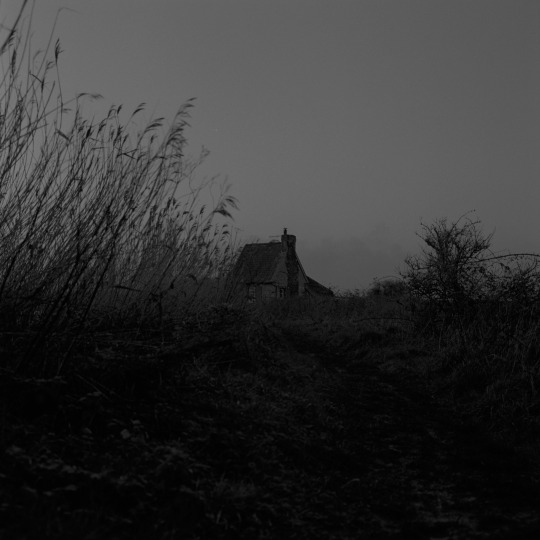
JM: Why is it important for you to challenge the current/modern perception of art?
TA: I think at least in terms of the art I produce and like to consume, that to some extent a lot of it feels as if it is falling into a mould or at least has a very similar progression and trajectory of evolution. I believe this is predominantly a mark of social media as well as the societal pressures of making a financially sustainable practice. This also forces conformity in terms of censorship and social norms, whilst also gratifying you for providing images that the largest amount of people appreciate. For me it becomes important to question this modern perception of art, mainly out of annoyance at how comfortable it feels to produce work I subconsciously believe people want to see. Within future work, I hope that I can break away from any notions I may have as to what I should be creating.
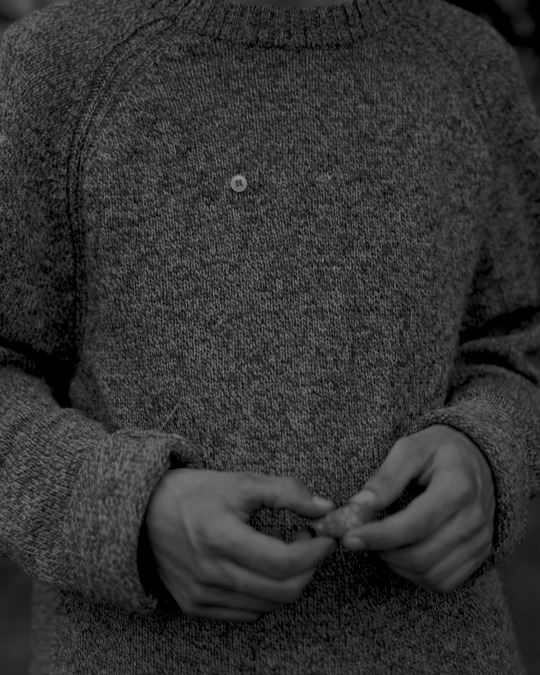
JM: Why did you submit that image to LTRF?
TA: I would describe my image as a quiet moment, it feels mundane yet almost nostalgic in subject matter. I enjoyed how the pairing almost began to create a narrative link between the two, being that the other image also felt sombre. I was also drawn to the juxtapositions in textures and tones between the fabrics of both images, they just had a very natural flow.

JM: Lastly, What is your favourite moth? & If you could give yourself any advice right now what would it be?
TA: I definitely have to go with The Death Head Hawk moth, purely because of how uncanny it is that they have a pattern resembling a human skull on their back.
In Terms of advice, I would tell myself to experiment more and to not necessarily worry about how it will fit into a larger body of work.
___________
Tavis Amosford https://www.tavisamosford.com
Let The River Flow on Instagram
Issue 2. Available to Pre-Order now.
0 notes
Text
An Interview with Tristan Spinski
Jaime Molina: Please introduce yourself.
Tristan Spinski: I grew up and have lived all over the place, both here in the US and a little time abroad in SE Asia, so wherever I've lived, I've always been from "somewhere else". For the last 8 years, I've lived along the Maine coast in the northeast corner of the United States.
I had an undisciplined, passive interest in photography growing up and through college. In my mid 20s I went off to graduate school at Berkeley to work on my writing with the goal of becoming a journalist. The program encouraged students to explore other forms of storytelling, and I opted to take a documentary photography course taught by Ken Light and Mimi Chakarova. That was in 2004, and was my entry point to photography and what was to be my career and a life fully immersed in photography and visual storytelling. You never end up where you expect to, at least not in my experience. Over the years I've migrated from news-driven priorities into conversations about land use and the intersections of culture, economy and the landscape. I recently wrapped up a project on gas drilling in Pennsylvania, where I partnered with a sociologist for his ethnography about a community that has a long history of tethering its economy and cultural identity to natural resource extraction. As that chapter closes, I'm embarking on two new series — one involving endangered birds, and another being a close examination of a landscape near my home.
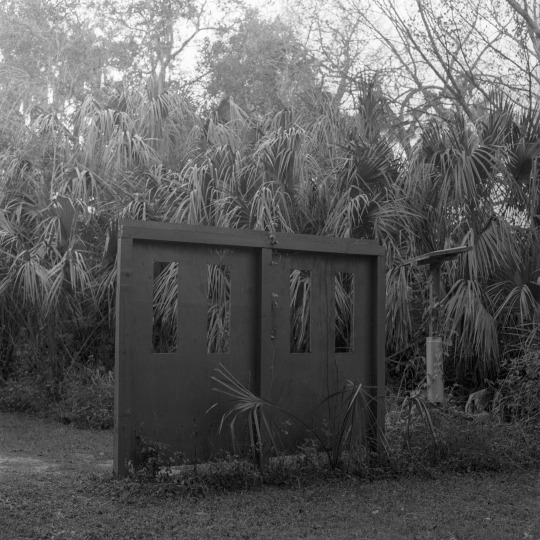
JM: Why is it important for you to work with conservation publications/organizations?
TS: I believe in the work they do and feel a responsibility to contribute. Once I had a foundational understanding of photography and, through assignment work, had experienced a spectrum of issues and stories, I began to unpack my motivations and inspirations. I found/find it difficult to be honest with myself and to distill what I truly want to stand for with my life and work from the pressures, distractions and seductions of the media cacophony. And there are so many realities that influence my practice and path — privilege, family, where I was raised, what I read, my friends, I could go on forever.
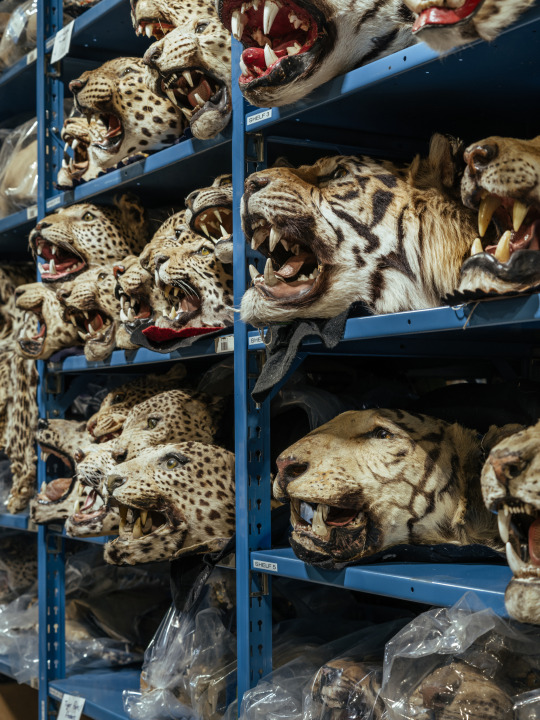
JM: Is there a writer or book that influence your current practice? and why?
TS: I think every author I read influences my practice. It's a mixture of elation, that I'm absorbing a book or article and actively applying it to whatever I'm working on, and also a bit of insecurity, as I assume that I don't have a strong enough constitution of self to resist being swayed. What's that cliche about bending so you don't break?
A standout that I consider a creative "North Star" would include J.A. Baker's "The Peregrine". I've been thinking about how to describe this book to you and what it means to me for more than a day now, and everything I try to convey feels blunted and clumsy. The humility of Baker traversing the English countryside to observe and understand the falcon elevates to a synthesis of science, classical literature and meditation that makes my heart ache.
Gay Talese is also a foundational influence in my own practice. It was required reading during college, and I'm grateful for it. "Frank Sinatra Has a Cold" sets a standard for a fly-on-the-wall perspective, patience and character insight, as Talese was never granted an interview but rather was able to spend time in proximity to Sinatra as he went about his business and socialized. There's a great collection of Talese's writings, "Fame and Obscurity", that I would recommend.
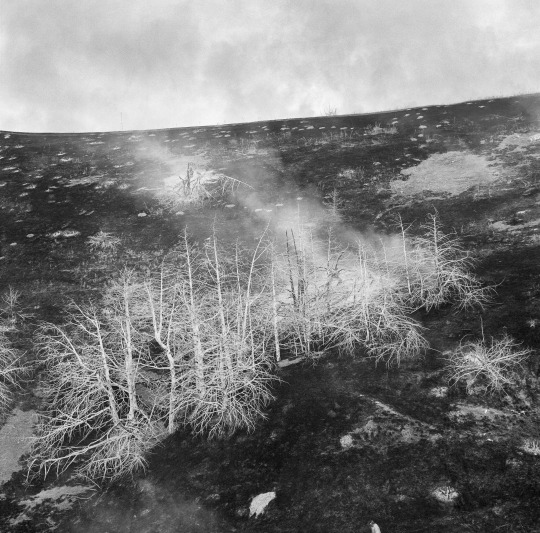
Ryszard Kapuscinski has become enormously influential to me in the last few years — ground level observations and personal experiences in the field working as a reporter that glide seamlessly into the stratosphere of geo-political forces. I was on assignment in Madagascar a few years ago and brought a copy of "Travels With Herodotus" with me. The writer I was working with borrowed it while I was laid flat in my tent with a boiling rash and a debilitating stomach bug. He finished it, acknowledged how it made him reconsider our own situation and project, and then I read it as I began to recover and I share my gratitude for Kapuscinski's mastery of craft. I think it might have saved the project! "Another Day of Life" is also a mind blowing, in the worst, most necessary way. I think that whatever Kapuscinski book I read most recently would be my favorite of his and would say is the most personally influential.
And to further my point about how everything influences me, I read "The Overstory" by Richard Powers last spring, as COVID shut the world down. That set me on a course with my work to think critically about trees and consciousness beyond what we (humans) are capable of seeing. And when I say it influenced me, I don't say that lightly. After I finished "The Overstory", I started researching mushroom suit burial options for when I die (someday, hopefully not soon), so that I somehow become part of a tree as my own biomass is recycled back into the earth. I feel a bit self conscious as I write this. But it's true. I told my wife my wish/intention with this, which was jarring and probably something I could have led into a bit more gracefully. I told her to read the book, and then she'd understand. On my current landscape project, I'm thinking about this book every time I'm on site.
And now I'm reading "Braiding Sweetgrass" by Robin Wall Kimmerer. I don't want the book to end. It's like eating a dish and getting upset that with every bite you're closer to finishing it. To your earlier question on why it's important to me to work with conservation organizations, I'll quote Kimmerer, out of context, here: "What else can you offer the earth, which has everything? What else can you give but something of yourself?"
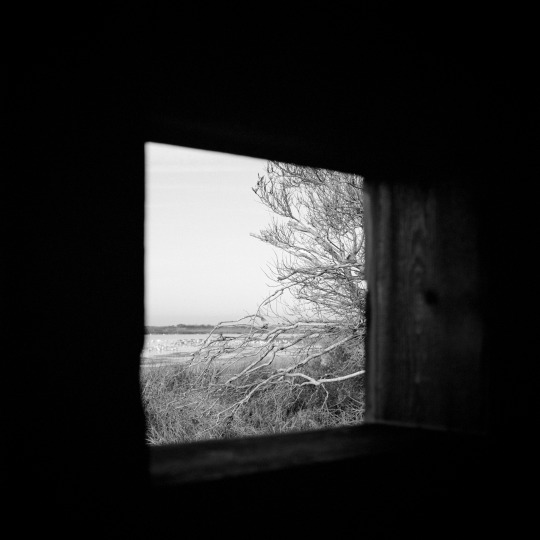
JM: How have you been producing work during COVID times, and how do you think it will affect your practice in the future?
TS: COVID has been both enormously disruptive, as well as clarifying. Save two or three projects, almost all of my assignment work has been COVID-related in the past year. Only one has put me in an vulnerable situation, which was early in the pandemic and wasn't intentional. I live in a sparsely-populated, rural pocket of the United States and have stayed close to home. Most assignment work has me documenting the social and economic impacts of COVID on a regional scale. And all of this has been at the request of editors at various publications, so I have no personal attachment, other than I live here and feel a commitment to my family, my neighbors, my community and my state, so I do the best job I can under the circumstances. It's necessary to communicate what's happening and I participate because it's my job, as I consider something like this to be an "all hands on deck" responsibility and it's no time to demand to be hired for passion projects.
My personal work has stalled. Completely. I just sent a year's worth of film into the lab, none of which amounts to more than random entries to my imaginary journal. This pause has made me reset, forced me to read, think, talk out ideas, and generally reconsider what I'm doing and why. I just started an examination of a nearby landscape. I wish I had found a path forward with this project earlier in the pandemic, as it's accessible and nobody is around, but I couldn't (and still can't), which is frustrating and keeps me up at night. So now I'm attempting to work my way through it. We'll see.
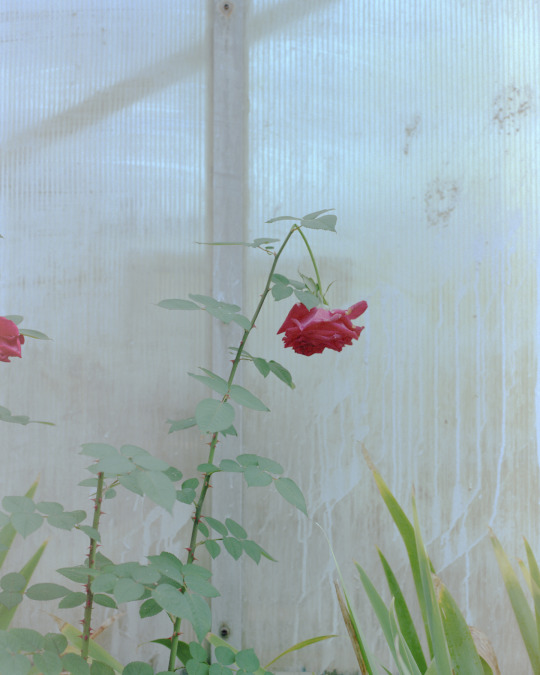
JM: Could you tell us why did you decide to submit that photo to LTRF?
TS: While a lot of my work is rooted in landscape, a conversation I'm interested in having revolves around the fraying relationships and growing distance between people and most other living things. In that context, this image felt appropriate.
JM: What is your favourite bird?
TS: Ha! My favorite bird seems to change daily. I have friends who are ornithologists, and they will casually mention an insanely interesting fact about a bird that catapults that particular species to the top of my list. Or I'll read some jaw-dropping statistics and lose my mind. For instance, last autumn I got to work alongside Scott Weidensaul along the northern coast of Maine, close to where I live, as he studied migrating saw-whet owls. They are tiny and ferocious predators that fit in the palm of your hand. So I became a bit obsessed with them, and then got to reading Weidensaul's book, "Living on the Wind", about bird migrations. Early in the book he talks about Blackpoll Warblers, which use air currents to aid their transcontinental migrations from western Alaska, east across northern Canada to the Atlantic and then south to Venezuela — "an overwater trip of 2,000 miles — a passage with no rest, no refuelling, no water, during which each will have flapped its wings nearly 3 million times. 'If a Blackpoll Warbler were burning gasoline instead of its reserves of body fat, it could boast getting 720,000 miles to the gallon,' note two researchers." I had to look up images of the bird, and realize that I've seen these and never gave them a second thought. But think about how truly magnificent these little creatures are. And it's not just the spectacular that makes me love a bird. I was out walking my dogs last spring and I heard a bird chirping that sounded, to me, just like R2-D2, from Star Wars. Turned out to be a Bobolink, which also sounds like a Star Wars character. But they look like disheveled little Franciscan monks — dark bodies with a circular yellow patch of plumage on the back of their heads resembling the bald patches, which is devotional practice of tonsure. I then learned that where I walk my dogs is designated as a Bobolink breeding habitat, so it became a daily symphony of R2-D2s. And when they fly, they appear a bit slow and clumsy, almost like they've had a few beers before taking off. So maybe that's my favorite bird. I'm sure I'll read something or see something soon that turns my attention elsewhere.
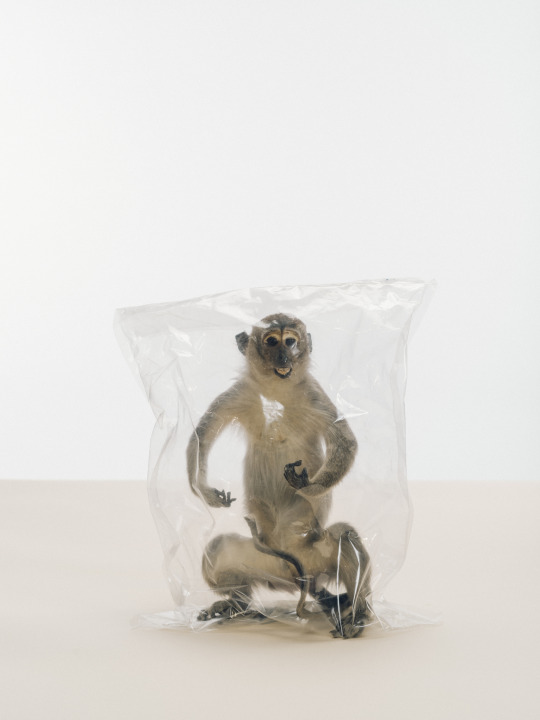
JM: If you could give yourself any piece of advice right now what would it be?
TS: I'd reiterate the advice my late father, who I admire more than I can express here, gave me: Simplify.
Thank you Tristan!
___________
Tristan Spinski
Let The River Flow on Instagram
Issue 1. Available now.
0 notes